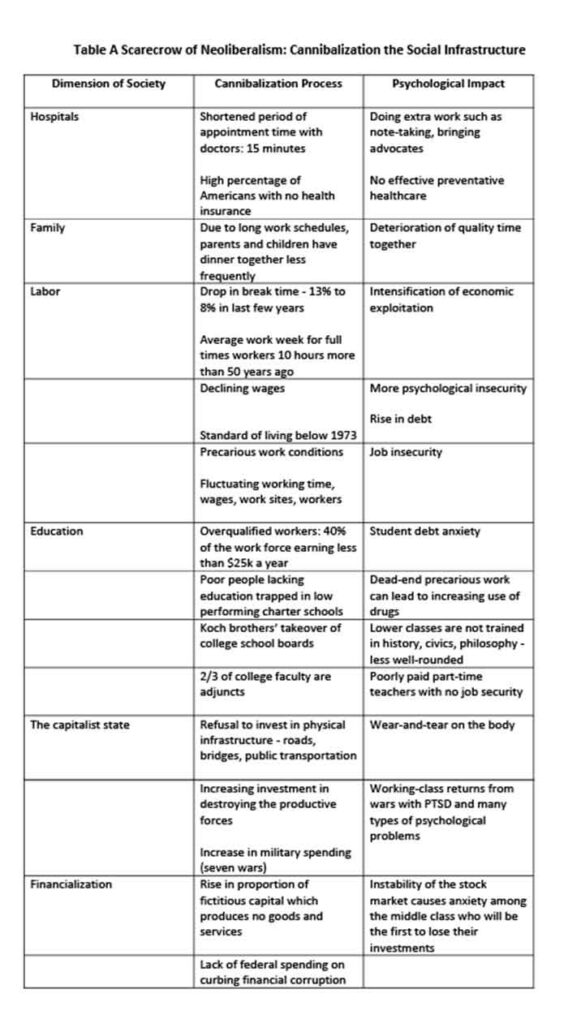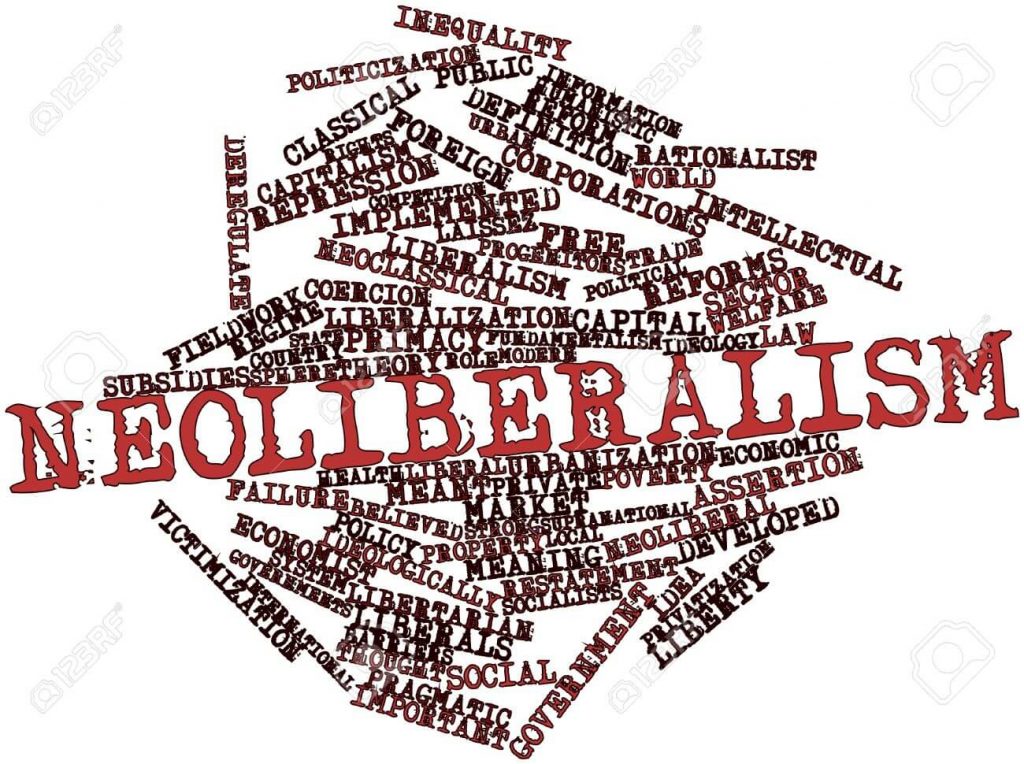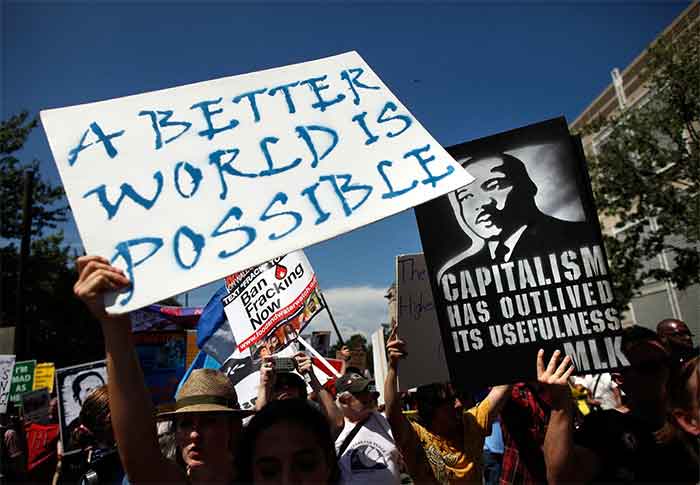
Orientation
In this two-part article, I trace facets of neoliberal psychology over a 50 years period, from 1970 to present. The first facet of neoliberal psychology is the “realist” phase in which capitalists strip the individual of as many of our social, qualitative (as opposed to quantitative) relations as well as our historical and cross-cultural identities so that everything can be reduced to an economic, quantitative, measurable, calculating short-term cost-benefit analysis. Every activity is saleable and reduced to a price. This psychology will be expressed as it applies to developmental psychology, toys, sexuality, thinking processes and attention span. This will be the subject of Part I
The second facet of neoliberal psychology is its romantic dimension. At the same time that neoliberal realist psychology was stripping the individual of his social and historical identity, some middle and upper middle-class individuals fled into what I call “romantic” neoliberalism which included humanistic, emotional expressive psychology popular throughout the 1970’s. Beginning in the mid to late 1970s and going through at least the rest of the 20th century was a kind of new age spirituality. This will be the subject of Part II.
Taken together, there are three kinds of self under neoliberal psychology:
Entrepreneurial self: realist psychology – Alexander Rustow
Expressive self: romantic psychology – Maslow, Rogers, Perls
Mystical self: romantic psychology – Jung, Eliade, Campbell
Romantic, emotional and spiritual selves are two different answers to the experience of feeling trapped by modern social conditions and realist psychology. Its reaction is either for the individual to:
- detach from society and rebel emotionally, or;
- reject the associative, social contract relations of modern life, not by denying our social identity as the romantics do, but to dissolve into pre-modern social life as in the Middle Ages and pre-Christian paganism.
Exploitation, alienation and mystification in bourgeoise psychology
In my two-part argument, What is Socialist Psychology? I argued that bourgeois psychology strips the human species of its social and historical identity and treats this isolated, alienated individual as ground zero of human psychology. Then it tacks on the social and historical dimensions as after-effects, as derivatives which weakly interact with this self-subsisting individual. On the other hand, in order to understand neoliberal psychology in a socialist, macro-cultural way, the dynamic between society and the individual under capitalism needs to start from work relations in terms of exploitation of the workers’ surplus value by the capitalists. In addition, there is alienation of the workers:
- in the commodities produced;
- in the work process itself;
- from other workers on the job;
- from power settings where work processes are decided;
- from themselves.
In addition, the mystification of relations between capitalist and worker is such that workers develop what Marx called “false consciousness,” believing their conditions are not exploitative, alienating or mystifying. Because bourgeois psychology excludes any of these powerful concepts, it cannot successfully explain the unhappiness of people in capitalist society in any kind of systematic manner.
While the oppression of people may ultimately depend on state violence, it is far more cost-effective if one can convince people that this system of oppression is natural and unchangeable. Propaganda works best as an ideology that denies, minimizes and misrepresents realty. As it turns out, exploitation, alienation, mystification and ideology are necessary ingredients in the ruling classes’ recipe for controlling workers.
The power of ideology
Paraphrasing Carl Ratner in his book Neoliberal Psychology, ideology includes at least the five following techniques:
- Deny the truth of oppressive features of society;
- Fabricate positive features of society;
- Acknowledge certain injurious effects of oppression with the qualification that they are necessary evils that ultimately lead to improvement and fulfillment;
- Acknowledge certain injurious effects of oppressions while attributing them to extraneous factors—mistakes, human frailty, or psycho-biological factors that ignore the real causes of problems in political economy;
- Present alternatives to the status quo and make them appear an oppressive, evil, extreme, unnecessary and unfeasible.
The whole point is on focusing upon rare, extreme, or sensational cases so as to narrow attention to individual causes of bizarre events. Focus is on individuals, not structures.
Origins of neoliberalism as a political economy
Carl Ratner argues that neoliberalism’s predominate ideological construct is called “entrepreneurialism”. This is the latest incarnation of individualism which began in the United States in the early 19th century. This term was invented by Alexander Rustow and other members of a neoliberal group called the Freiburg Circles in the 1930s. This was a right-wing reaction of economics of the Austrian school and its intellectuals in reaction to the Keynesian policies of FDR. In 1947 they met in Switzerland to found a Neoliberal society. It was convened by Friedrich Hayek, Milton Friedman and Gary Becker. They were all anti-communists.
The main theoretical architect of neoliberalism in the late 1950’s was James Buchanan. He led the neoliberal charge to destroy the institutions of the “matriarchal” state such as pensions, public education, unemployment and food stamps because it fostered under-productivity of the lower classes.
By the late 1970’s, economist David Kotz says that capitalist classes of the core capitalist countries responded to the reforms of the New Deal by abandoning the capital-labor compromise which developed in the early 1950’s and attacking the trade unions. They lifted the state regulations governing capitalists and their bankers. The expansion of finance capital through credit increased the gap between industrial capital and finance capital, much of which produced no goods or services.
In her book Dark Money: The Hidden History of the Billionaires Behind the Rise of the Radical Right, Jane Mayer discusses history of the Koch brothers neoliberal political-economy empire. Mayer explains that their unpopular policies had been used to fund alternative, private, secretive, organizations that influenced academic institutions, think tanks, courts, legislatures and the presidency.
In spite of all this, Keynesian New Deal economics worked well throughout the 1950s to the mid- 60s. As Ratner says:
What likely troubled the capitalist class most was the fall of the rate of profit after 1966. In the 1970s, US capitalism suffered a legitimacy crisis as the economy was mired in high inflation, unemployment and slower growth. The capitalist class mobilized politically in the 1970s. The laws regulating corporate political donations were changed. Neoliberal capitalism gave rise to some 25 years of relatively stable economic conditions after 1980. (Neoliberal Psychology, 53)
Thirteen reasons why neoliberalism is an Ideology and not a practice
Neoliberalism claims to want to make society more productive by stripping off every layer of social life that is not strictly economic and reducing it to the micro-social relations of individuals competing in a market. Thus, for neoliberals every interaction is a transaction. A transaction is a short-term economic exchange where inputs and outputs are quantitatively measured with no state or social mediation. As Margaret Thatcher once said, “there is no society, only individuals”. But in fact, this is an ideology because it contradicts what neoliberals actually do when it relates to their own social class. Here are some examples:
- The neoliberal conference in 1947 was funded by corporate capitalism, not neoliberal individualists.
- The Bank of England funded Hayek’s salary at the University of Chicago as well as the lectures Milton Friedman delivered.
- Neoliberals form organizations in healthcare, education, legislatures, the justice system, space exploration, transportation and science. In other words, they conspired with each other, they didn’t compete.
- They have established think tanks to control social policy. They didn’t let in ideas of how the economy should be run as a “free marketplace of ideas”.
- They started the American Legislative Exchange Council to integrate politicians with capitalists so that capitalists could write laws that politicians introduce into state and federal legislatures with lock-step uniformity.
- At the very moment that neoliberals were writing their individualistic concoctions of capitalism – after World War II – capitalism had entered its monopolistic stage of the concentration of capital and property.
- According to Ratner, entrepreneurs in the US compose only 9% of the population. “A few consultants and professionals (architects) have small businesses that fit that image.” (Neoliberal Psychology, page 118).
- Neoliberals surround themselves with collective institutions – The Chamber of Commerce, American Legislative Exchange Council and the Business Roundtable.
- The rise of the bank conglomerates and financialization completely contradicts its individualist ideology.
- Neoliberals undermine their own ideology with their imperialist foreign policy and militant interventions in foreign countries and overthrow democratically elected governments which do not submit to American economic and political demands. This is documented all over the world by Naomi Klein in The Shock Doctrine.
- James Buchanan who received his PHD from Friedman’s Department at The University of Chicago was heavily funded by the Koch brothers.
- The neoliberal Koch brothers took maximum advantage of federal subsidies for their oil and pipeline businesses – even engaging lobbyists to ensure these perks stayed in the federal budget.
- Neoliberal charter schools are not for the children of neoliberals. The horrors of bad teachers and lack of quality books there are the fate of the poor. Underfunded public education is what awaits the middle classes. Neoliberal ideologists send their children to private schools safe from the practices of neoliberalism.
Neoliberal cannibalization of the infrastructure
In practice, for the last 40 years neoliberalism has eaten away at the programs established by New Deal liberalism and this has been documented extensively. Since I want to address the psychological consequences of neoliberalism, I will be brief. Table A shows the effect of neoliberalism in six areas; hospitals, family life, workplaces, education, the capitalist state and financialization of life. There is a refusal to invest in the long-term consequences of the physical infrastructure (buildings, methods of harnessing energy) or the physical or mental health of workers. There is a stripping away of unquantified time such as hospital visits, break time, paid lunch, time at work. There is the destabilization of work schedules, decline in living stands and the narrowing of education to specialized knowledge to be able to do a job. In order to propagandize people to convince them that these conditions are normal, there is the marketization of language. This includes calling hospital patients “customers” or therapy patients “clients” or calling uber drivers “entrepreneurs”. Therapists tell their clients to “invest” in a relationship. Small business owners are told to “leverage” their strategizes or “brand” their new organization; I am told that the teachers’ organization that holds my pension is conducting “wealth management’ for my “brokered” account.
Neoliberal narrowing cognition of the working-class
It is very important for neoliberalism to presents all classes as relatively equal, when in reality it needs low-wage workers to stay in their place and not think too expansively. Thanks to the work of Basil Bernstein on socio-linguistic codes, we have very clear distinctions between the way working-class students reason as opposed to how the upper-middle class students reason. We can imply this from their different uses of language. What Bernstein found is that upper middle-class students use universalistic meanings for words that can go beyond their jobs. Working-class students use particular meanings that are limited to their work. Unlike the upper-middle class, working-class students use simple and unfinished sentences where their full thought processes are likely to be cut off. Working-class students’ vocabulary is more limited and is more descriptive than analytic. In Piaget’s work, this translates as upper-middle-class teenagers thinking in a formal operational way while working class folks use concrete operations.
Anyone familiar with Piaget’s stages of cognitive development would expect that upper middle-class adults would cultivate a more abstract form of thinking because this kind of thinking is necessary for lawyers, doctors, architects or engineers. If you are a bus driver or train operator, thinking more abstractly is less required to do your job. But if working-class and upper-middle classes students are in school, how would these differences come to be? The short answer is the difference between going to charter schools or underfunded public schools as opposed going to private schools. Assuming there is a relationship between IQ scores and cognitive development, Ratner says there is a deterioration of verbal IQ scores among working class students between the ages of 8 to 11 and between eleven and fifteen years of age. In other words, the IQ scores were closer among students before the age of 8. However, after eight years of poor education working-class cognitive ability deteriorates.
Capitalist marketing invades developmental psychology
On the surface it may seem that developmental psychology has been in the realm of psychologists, educators and the children or adolescents they meet with in labs, field studies or in interviews. It came as a surprise to me to find that clothing manufacturers and advertisers were hard at work in the 1920’s and 1930’s to convince parents that they knew more about children than either psychologists or educators. Ratner points out:
New emotions in parents and children were cultivated in the 1920’s and 30’s by clothing manufacturers and marketers in order to induce them to consume quantities of expensive clothing.
Clothing merchants cultivated a distinctive new form of material love and material cognition of children. Merchants wrote quantities of articles and advertisements in trade journals and popular magazines expressing the following psychological themes (159) –
Some examples of this are:
- Mothers should express love for their children effusively
- Children have an insatiable need for love
- Children’s needs are great and must be satisfied quickly
- Children like new stimulations. They are dissatisfied (bored) with stable, familiar conditions
- Children are entitled to things
- The good life is defined as having more material possessions
- Children’s appearance is very important to their success and action
- Children know themselves and are capable of making choices to make themselves happy
- Parents do not really understand children’s needs and development and should not interfere
- Children are impulsive, hedonistic and egotistical
- Children identify themselves with material objects
- Children are unique and require objects that bring out their uniqueness
- Children want to grow up quickly
- Mothers are insecure about rapidly changing social norms
For the good life to be defined as an increase in material possessions, it serves capitalists to convince parents that they must express their love effusively through the accumulation of ever-new playthings for their children. How convenient it is for children’s appearance to be crucial to their identity and development and for children is identified with material options. Parents need to stop being old fuddy-duddies, for the times they are ‘a-changing.
These clothing manufacturers and advertisers propagandized children’s emotions to be intense, impulsive and insistent and could only be satisfied by a whole industry of children’s clothing, toys and now a cornucopia of electronic gadgets. Children’s supposed independence and uniqueness had capitalist motives. As it turns out, the developmental category of “toddler” was not the invention of psychologists or educators but was originated by capitalists in the service of selling clothing products to parents.
The tyranny of sleekness
Barbie dolls
If you are a woman, surely you remember Barbie dolls. In fact, according to Carl Ratner, 99% of three to ten-year-old girls owned them. One of the major characteristics of Barbie is her waistline, which is 39% smaller than the waistline, not of the average woman, but of anorexic women. But what does that have to do with the lives of 3-11-year-old girls? Who cares what Barbie’s waistline is? Well, apparently young girls do. By the time they are eight, a whopping forty percent which them were thinner. By the time they are eleven, 79% wish they were thinner. According to neoliberal ideology, socialization is fairly superficial with each girl free to choose their personal meanings. But this research shows that girls’ “free choices” conform to commercial pressures in a very predicable way.
But what does neoliberal capitalism gain by women striving to be thin? In terms of selling products, if women were happy with their body shape, they would buy the clothing that went with that shape and that would be the end of it. There would be no striving, dieting and dieting programs. However, if your model is a Barbie doll and you are over 12 years old, you are in trouble. Whether you are a teenager, young or middle adult female, no matter what you do you, whether you have children or not, you will not be able to maintain the waistline of an average twelve-year-old, or even an anorexic 12-year-old. But what you will be guaranteed to do is spend plenty of money on clothes, dieting, and exercising. You will be strung along the line for the rest of your life. There is a reason that Macy’s advertisements have 12-year-old girls dressed to the teeth to look twice their age.
Fast food
According to Ratner, of all the commodities that are bought and used, there is no commodity that can be bought and consumed as frequently as eating. One may like to buy new shoes, but unless you are Imelda Marcos, there is a limit to how many shoes you buy, and the same is true for clothing, cell phones and the like. However, no other commodity can be bought and consumed as frequently as food. You can eat food continuously for 16 hours a day; at work, with friends, driving a car, watching TV or being on the internet. However, what kind of food will it benefit capitalists that you buy? Hint, it is not the good quality food which takes a long time to digest and after which the person eating feels sated.
It is the cheap food which is digested quickly and is extremely stimulating. While providing instant gratification, unlike healthy food, there is no real satiation. It just stimulates new cravings. Most importantly from the capitalist viewpoint, fast food guarantees weight gain. Who might suffer most from weight gain? All the women who want to have waistlines like Barbie. So, the capitalists have women coming and going. First, they are exploited in that they invest in diets, gyms, training programs to aspire to possess 12-year-old bodies. Then women are exploited in consuming the fast food and then these “overweight” conditions are reproduced because they have gained weight that makes them even further away from Barbie.
Lean products express neoliberalism
As Ratner insightfully points out, the ideological fanaticism about thin female bodies (white women, mostly) is not just about the shape of women, but the shape of all products under neoliberal capitalism such as thin, light consumer products including cell phones, flat panel TV screens, and lap top computers. It is also reflected in architecture that emphasizes sleek lines and sharp angles. Sleekness represents capital on the move. Neoliberal capitalists don’t want to invest in anything that is stable or takes time to grow. Like thin people, neoliberal capital is agile and changes direction quickly:
- The investor is nimble in shifting capital to finance and does not get weighed down in infrastructure and its inevitable depreciation.
- The employer is nimble in anticipating demands and delivering products “just in time.”
- The employer is nimble in hiring and firing employees and keeping its labor supply to match sales, no more and no less.
- The manager is nimble in shifting work to low wage areas and shifting supply chains to lower cost areas.
Sleekness cannot tolerate waiting, training, saving, persevering, planning or considering things for the long-haul.
Neoliberal feminism: hook-up sex – no deposit, no return
It is tempting to think that casual sex is a male preoccupation and that most women, regardless of class, do not want casual sex. But as Carl Ratner points out, “hook up” sex in college is something actively pursued by upper middle-class women. These women make a cost-benefit analysis of who they want to have sex with.
They see building their resumes, not finding boyfriends, as their main job. They do not want to deal with the complexities of managing a relationship through school. One claimed that having one-night stands made her a true feminist. From a macro-psychological standpoint, a contracting capitalist economy increases competition for work and its impersonal economic relations make romantic entanglements slow and sticky. Therefore, these upper-middle class students have adapted. Furthermore, to increase the chances of a successful uninvolved adventure, these women rely on each other to determine if their choice is a good match. Her girlfriends help her decide.
Normal signs of affection such as eye contact, holding hands or cuddling are avoided. If students were good friends, if they have sex, they are to act like acquaintances. If they were acquaintances initially, they should act like strangers. If they were strangers before they engaged in sex, they should not acknowledge each other’s existence at all.
These hook-ups are not a retreat or an escape from the world of political economy, but an expression of it. How?
- Young women avoid personal intimacy and dependency just as people at work avoid personal loyalty or dependence.
- Young women plan to have sex with anonymous partners who are similar to anonymous strangers who exchange products on the market.
- Just as the job market is uncertain in terms of fluctuating work time, salaries, work sites and workers, so sex adventures are rotated, unplanned and insecure.
- The commodification of one’s body and identity in the sexual world is a micro cousin to the macro world of selling one’s labor to the highest bidder.
- The accumulation of impersonal sexual conquests matches the accumulation of commodities when shopping.
- The termination of a hook-up after sex, as Ratner says, parallels the management of the termination of workers:
Terse strategies are prepared and implemented by personnel staff for summarily informing workers to some brief counselling resources if necessary, and then often calling guards to physically escort workers off the premises. (171)
Ratner summarizes beautifully the macro cultural perspective on sexual hook-ups:
It makes people more adaptable to neoliberal activities required at work, school, in shopping and medical encounters. Neoliberal sex makes it easy to transition from the bedroom to the workplace. Hook-up sex makes lovers better employees, managers or students.
The concrete neoliberal consequences of macro cultural psychology are that individuals are agents of neoliberalism, just as Milton Friedman was. Hook-up participants are neoliberal revolutionaries. (173)
These Neoliberal feminists tear down the ramparts of traditional sexuality, just as Friedman and Neoliberal economics tore down the ramparts of the New Deal state structures.
Mindfulness as spiritual libertarianism: transition to romantic neoliberalism
The image that might come to mind upon hearing the term “mindfulness,” at least to many middle or upper-middle class people, is of a solitary individual, probably a Buddhist, in a meditative posture with their eyes closed and happily detached from the outside world.
But the reality of mindfulness, at least the strand of it that was started in the United States under the leadership of Kabat-Zinn, has a contradictory relationship to Buddhism. In his book McMindfulness, Ronald Purser points out that mindfulness is a four-billion-dollar industry and more than 100,000 books have the word “mindfulness” in them or a variation of that term in their titles. When I first heard of the term mindfulness twenty years ago, I thought about it as a Buddhist approach to therapy. There are mindful therapies such as “Acceptance and Commitment Therapy” that fit this category, but in the hands of Kabat-Zinn, mindfulness has been used in work settings, school settings, in politics, even in the military and at the World Economic Forums.
Purser compares Kabat-Zinn to Deepak Chopra in terms of being a spiritual salesman. One of Kabat-Zinn’s books, Full Catastrophe Living, has sold over 400,000 copies and has gone through fifteen editions. He founded a stress reduction clinic at the University of Massachusetts Medical School as far back as 1979 – perfect timing with the neoliberal elections of Thatcher in Britain and Reagan in the US. Why associate Kabat-Zinn with neoliberalism? Why would “McMindfulness” as Purser calls it, be considered right-wing or entrepreneurial? After all, Buddhists don’t usually appear to be right-wing people.
McMindfulness’ spiritual individualism historically
The upper classes in the United States by the middle of the 18th century were disgruntled with traditional western religions. A century later, the Transcendentalists – Emerson and Thoreau – focus on direct experience which had Eastern influences. For Emerson, the significance of Asian religions consists of assimilation of the present into the here and now. Thoreau read the Bhagavad-Gita at Walden Pond and drew on its ideas. By the end of the 19th century the libraries of upper-class Bostonians were filled with books not only on mysticism and Eastern religions, but also on the occult.
But, as usual, something dramatic happened when Buddhism got transported to the United States. Buddhism was stripped of its social context and became privatized spirituality, a spiritual individualism. In the 20th century D.T. Suzuki’s revisionist version of Zen made Buddhist meditation individualist enough to suit the Beats in the 1950’s.
Defining McMindfulness
For Purser, “McMindfulness” is a Western colonization of Buddhism which says the causes of suffering are disproportionately inside us. The underlying cause of dissatisfaction is our chattering mind. By failing to pay attention to what actually happens in each moment, we get lost in regrets about the past and fears for the future. All we need to do is close our eyes and pay attention to our breath. We might think that mindfulness would have something to do with critical thinking, but in mindfulness, critical thinking is not welcomed. On the contrary, it is pathologized. Other distractions to mindfulness include “doing”, which is seen as a distraction, as well as long-lasting emotions like anger.
But suppose you are angry about racism and police brutality that happened two days ago? Just “release”, go back to deep breathing and focus on the present. This sequestering of mindfulness from emotion, action and socio-political situations is central to the creation of a neoliberal psychology. To those who persist in suspecting that mindfulness leads to socio-political passivity, Purser says we are offered “trickle down” social change. According to Kabat-Zinn, people will naturally become social change agents as an automatic consequence of mastering mindfulness. However, there is no research that supports this.
Mindfulness is presented as a context-free technology which is simply imported from the East and applied to the West. But the mindfulness movement does have a context, namely the late 1970’s when neoliberal economics was just starting.
Ruth Whippman points out that the positive psychology movement has been funded by some of the most right-wing conservative organizations. The John Temple Foundation founded by an evangelical Christian billionaire… The Foundation has doled out millions of dollars in grants and prizes to positive psychology professors (McMindfulness 32)
After the 2008 crash, corporate capitalists got the fever for mindfulness and passed it down to their employees who were encouraged to do more with less. These employees were “rebranded” as entrepreneurs of the self, using mindfulness to take full responsibility for their performance. In other words, work harder, faster and be mindful along the way.
Is Mindfulness Buddhist or not? Manipulation of Buddhism
Though a follower of Theravada Buddhism himself, Kabat-Zinn left all mention of Buddhism out and replaced it with bio-medical terminology at his clinic and when he was attempting to received public funding. When trying to sell Mindfulness to corporations, Buddhism is denied. But in New Age settings, with people hungry for awakenings that are spiritual, talk about “dharma” is suddenly present.
Coming attractions
But is there any resistance to neoliberal realism psychology? Is it all gloom and doom? After all, the era just before the rise of the entrepreneurial self in the 1980’s we had the human potential movement of the 1960’s and into the early 1980’s. What was the relationship between neoliberal realist psychology and the humanistic psychology of Maslow, Rogers and Perls? Furthermore, the early 1980’s was also saw the rise of Carl Jung’s spiritual psychology along with the mythological work of Joseph Campbell. Both Jung and Campbell seem the exact opposite to neoliberal realist psychology. Are they opposites? Is there overlap? How do we understand the relationship? Answers to these questions and more will be found in Part II of this article.

Bruce Lerro has taught for 25 years as an adjunct college professor of psychology at Golden Gate University, Dominican University and Diablo Valley College. He has applied a Vygotskian socio-historical perspective to his three books: From Earth-Spirits to Sky-Gods: the Socio-ecological Origins of Monotheism, Individualism and Hyper-Abstract Reasoning Power in Eden: The Emergence of Gender Hierarchies in the Ancient World Co-Authored with Christopher Chase-Dunn Social Change: Globalization from the Stone Age to the Present He is also a representational artist specializing in pen-and-ink drawings. Bruce is a libertarian communist and has lived in Oakland California for 25 years.
Originally published by Planning Beyond Capitalism
SIGN UP FOR COUNTERCURRENTS DAILY NEWSLETTER















































